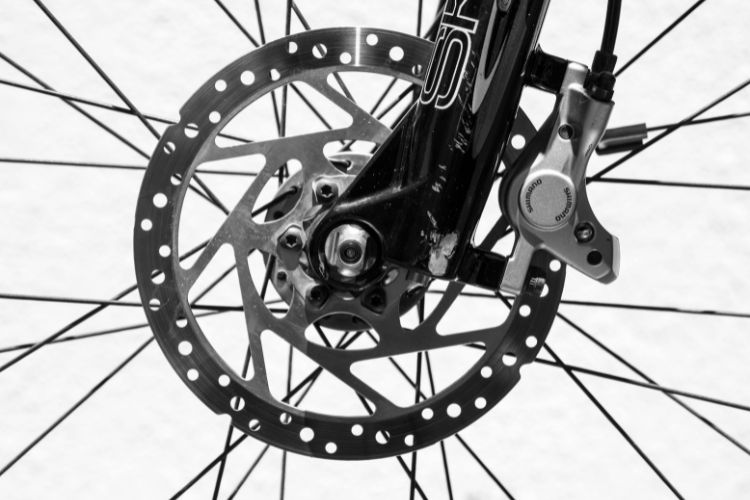The History of the Bicycle and Its Modern Technology
Posted on 09 Dec, 2024

One of the most important innovations in personal transportation for a long time, the bicycle has given us a simple but efficient mode of transport that has undergone substantial development since it was first invented. The bicycle, which started out as a two-wheeled walking aid and has since evolved into sophisticated models with cutting-edge capabilities. With many of us seeing cycling as not just a means to an end but also for exercising and sightseeing, we wanted to gain a better understanding of the bicycle's lasting significance in society and its potential for the future by investigating its historical origins and the technology underlying contemporary designs.
Early Beginnings of the Bicycle
The bicycle's inception dates back to the early 1800s, when German inventor Baron Karl von Drais created the "Laufmaschine" or "Dandy Horse" in 1817. Often called a "running machine," this early design was a straightforward wooden frame with two wheels and no pedals, meaning the user had to drive it with their feet. It was the first step towards two-wheeled personal mobility, despite its limited functionality.
The "Velocipede," also known as the "Boneshaker," was introduced in France in the 1860s, marking the next significant advancement. With its iron wheels and hardwood frame, this variant provided a better but bumpier ride. It also had pedals linked to the front wheel. Despite its shortcomings, the Velocipede made cycling more well known and paved the way for further design advancements. These pioneering bicycles generated curiosity and opened the door for later models that greatly enhanced comfort and safety.
The Evolution of Bicycle Design
Bicycle design continued to change after the "Boneshaker" gained popularity, and in the 1870s the high-wheeled Penny-farthing appeared. With a big front wheel and a much smaller rear wheel, it was faster but more dangerous because of its height and instability. Although there were drawbacks, cycling gained cultural significance and solidified its position as a well-liked recreational activity and form of transportation.
A major turning point was the advent of the "Safety Bicycle" in the late 1880s. The Safety Bicycle had a lower, more sturdy frame, two equal-sized wheels, and a chain-driven rear wheel, in contrast to the Penny-farthing. A larger audience could now ride more safely and comfortably thanks to this design's improvements in accessibility and balance. The Safety Bicycle's design established the groundwork for the contemporary bicycle by offering a dependable framework that is essentially unaltered in the typical bicycle design of today.
Technological Innovations in Modern Bicycles
Numerous technological developments have improved the weight, speed, and comfort of modern bicycles. The use of materials like aluminium and carbon fibre, which reduce weight while providing strength, is one of the major advancements. Bicycles are now easier to control thanks to this modification, particularly for cycling competitions where lightweight frames can increase speed and manoeuvrability. In addition, improvements in gear systems have enhanced control and efficiency by enabling riders to shift smoothly across various terrains.
The introduction of electric bicycles, or "e-bikes," has revolutionised the transportation industry by providing pedal-assist motors that lessen users' physical strain and enable longer commutes. Since they offer a practical and eco-friendly substitute for cars, e-bikes are especially well-liked in Metropolitan areas. Hydraulic disc brakes have since become widely employed to give dependable stopping force in wet or steep conditions, demonstrating the significant progress in braking technology.
Other innovations include ergonomic frame modifications that suit various body types and riding styles, as well as improved tyre designs for durability and grip.
The Role of Bicycles in Modern Society
Bicycles are a vital part of today's environmentally and health-conscious transportation system. In urban areas, bicycles are useful substitutes for cars, assisting in the reduction of air pollution, traffic jams, and environmental harm. Cycling is becoming increasingly popular and accessible cities throughout the world invest in bike-friendly infrastructure, such as bike lanes and bike-sharing schemes. These kinds of initiatives encourage more individuals to think about riding a bicycle as a practical way to get to work.
Bicycles are prized for their ability to improve both physical and mental health in addition to their environmental advantages. Frequent cycling develops muscles, lowers stress levels, and enhances cardiovascular health. Since many communities have formed cycling clubs, it has become a popular recreational and social activity due to its fitness benefits.
The relevance of modern bicycles is further increased by their versatility. Bicycles are becoming more adaptable to accommodate a range of demands, from cargo bikes made for moving goods to electric bikes which enable long-distance travel.
The Enduring Relevance of the Bicycle
The bicycle has experienced incredible changes from its modest origins as a basic walking aid to its current position as a flexible and environmentally responsible source of transportation. With improvements brought about by generations, the bicycle has become a timeless mainstay of personal mobility, improving its usability, safety, and aesthetic appeal. Bicycles are now seen as an essential part of sustainable urban transportation and individual health because of advancements in materials, design, and technology.
We hope you enjoyed this read and please do visit Careers in Design to check the variety of product and industrial design job opportunities, including roles focused on sustainable solutions.
Back to blogPosted in: Designers | Tagged: history of bicycle evolution of modern technology history bicycle origin
